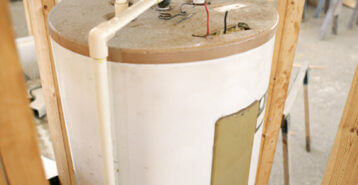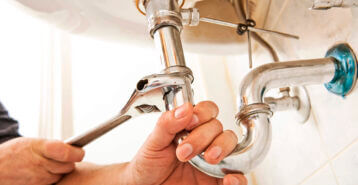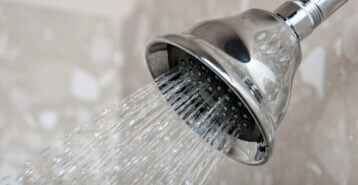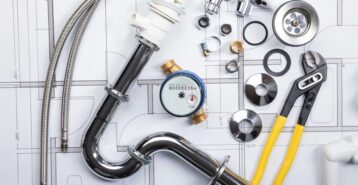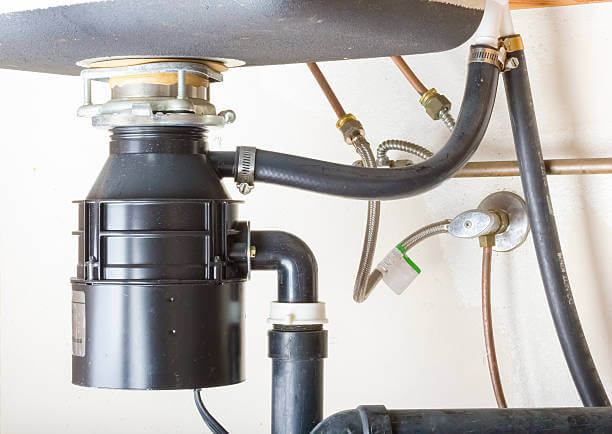Plumbing in Your Kitchen: What You Need to Know
The kitchen sink is a central feature in any home, but it’s also a hotspot for a variety of plumbing issues. From clogged drains to leaking pipes, the range of potential problems can be both diverse and disruptive. In this article, we’ll explore some of the most common kitchen sink plumbing issues homeowners face. Understanding these challenges is crucial, not only for maintaining the functionality of your kitchen but also for ensuring the overall health of your home’s plumbing system. Promptly addressing these issues is key to avoiding more significant, costly repairs down the line, and maintaining a smooth-running kitchen.
Common Kitchen Sink Plumbing Issues
When it comes to kitchen maintenance, plumbing issues are both common and diverse, often causing inconvenience and potential damage if not addressed promptly. In this list, we’ll explore the most frequent kitchen sink plumbing problems that homeowners encounter. From clogged drains and leaking pipes to malfunctioning garbage disposals and more, understanding these common issues can help you identify and tackle them effectively, ensuring your kitchen remains functional and efficient.
Clogged Sinks
- Causes: Clogs typically occur from food waste, grease, and non-food items building up, leading to obstructed water flow.
- Solutions: Use a plunger or a baking soda and vinegar mixture for minor clogs. Persistent blockages often require professional plumbing services.

Leaking Pipes
- Detection: Look for moisture, puddles, or water stains under the sink, along with dampness or mold, indicating leaks.
- Repair: Temporary fixes include tightening fittings or replacing washers. Continuous leaks may need professional repair or pipe replacement.
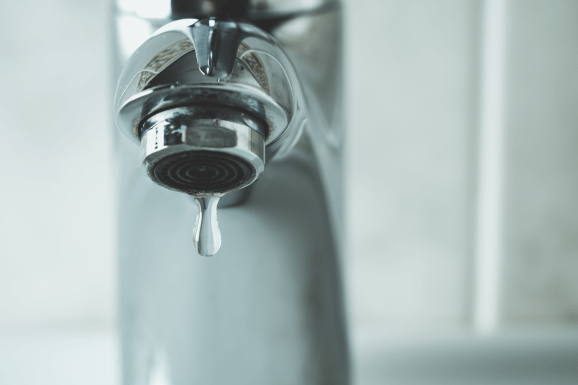
Disposal Issues
- Challenges: Overloading or hard objects can cause garbage disposals to jam, make noises, or stop working.
- Maintenance: Regular cleaning and avoiding hard materials prevent issues. For malfunctions, try resetting or clearing jams; complex problems may need a technician.
Frozen Pipes
- Prevention: Open kitchen cabinets during cold spells to allow for warm air flow and insulate pipes in cold areas.
- Addressing: Thaw frozen pipes gently with a hair dryer or warm towels. If pipes burst, shut off water and seek professional help.
Dishwasher Connection Problems
- Impact: Dishwasher issues like clogs or backflows can affect sink plumbing.
- Solving: Clean filters and check hoses for blockages. Complex problems like water line or drain issues may require professional assistance.
Faucet Malfunctions
- Issues: Leaks, drips, and low water pressure are common, often due to wear or mineral buildup.
- DIY and Professional Help: Minor issues can be resolved by replacing O-rings or aerators. Persistent or complex problems warrant a plumber’s help.
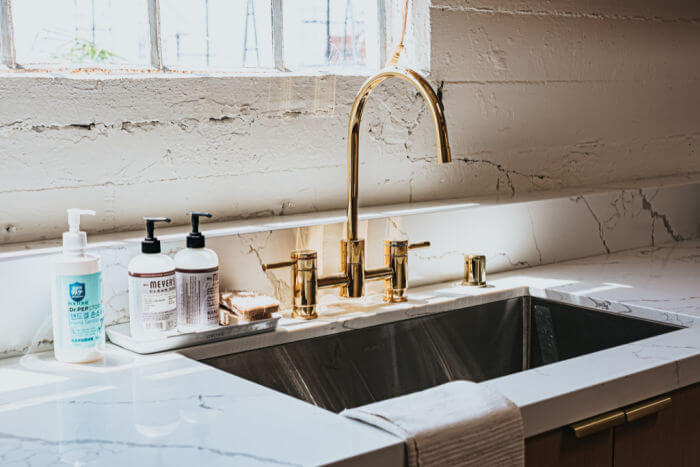
Odor Problems
- Causes: Trapped food particles or bacteria in the drain can cause bad smells.
- Elimination: Use baking soda and vinegar for regular cleaning. Persistent odors might need professional drain cleaning.
Low Water Pressure
- Causes: This can result from mineral buildup in aerators or pipes, faulty fixtures, pipe leaks, or main supply issues.
- Solutions: Clean aerators to remove deposits, replace faulty fixtures, check for leaks, and consult a professional for supply line or regulator issues.
Addressing these common issues with the right approach can help maintain a functional and efficient kitchen sink.
Costs to Repair Common Kitchen Sink Plumbing Issues
Addressing kitchen sink plumbing issues can vary widely in cost, depending on the type of problem and whether you choose DIY solutions or professional services. For common issues like clogged drains, DIY methods are often free or low-cost, but if you need a professional, it can cost between $100 and $250.
Leaky faucets are another frequent issue; simple DIY fixes might be under $20, but professional repairs can run from $100 to $300. Garbage disposal problems can be particularly variable: minor issues might be fixable at little to no cost, but professional repairs or replacements can range from $150 to $400. Leaking pipes under the sink present a more serious issue, with costs for professional repair ranging from $150 to $350, and more extensive repairs possibly exceeding $500.
In colder climates, frozen pipes can be a major concern. Thawing them might be a low-cost task if done yourself, but professional repairs for burst pipes can cost from $200 to $500 or more. Dishwasher connection issues might involve simple fixes around $100 to $150, but more complex repairs can cost between $150 and $350.
Lastly, odor issues are usually resolved with low-cost home remedies, but if professional drain cleaning is required, expect costs in the range of $100 to $300. It’s important to remember these costs can vary based on your location, the problem’s severity, and the plumber’s rates.
How to Fix a Kitchen Sink: DIY and Professional Solutions
Fixing a kitchen sink often involves addressing a range of issues, from simple clogs to more complex pipe repairs. Here’s a guide on how to approach these problems, whether you opt for a DIY fix or professional assistance.
For minor clogs, DIY methods like using a plunger or a mixture of baking soda and vinegar can often be effective. This approach is eco-friendly and cost-effective for small blockages. If the clog persists, a plumbing snake can be used to remove deeper blockages. However, it’s essential to use these tools carefully to avoid damaging your pipes.
Leaky faucets often require replacing worn-out washers or O-rings, a task that can usually be handled without professional help. Most hardware stores carry these parts, and online tutorials can guide you through the process. If you’re experiencing low water pressure, cleaning or replacing the faucet’s aerator might solve the issue.
For garbage disposal problems, resetting the unit or manually turning the blades to dislodge blockages can be effective. However, always ensure the disposal is off and unplugged before attempting any repairs.
When it comes to more severe issues like leaking pipes under the sink or frozen pipes, it might be safer and more efficient to seek professional help, especially if you’re unsure about the cause of the problem or how to fix it. Plumbers can also address complex issues with dishwasher connections and deep clogs that affect multiple fixtures.
In some cases, especially with older plumbing systems, what starts as a minor issue might indicate a need for more extensive repairs or even a complete system overhaul. In such situations, consulting with a professional can save time, money, and potential damage in the long run.
Whether you choose to tackle kitchen sink repairs yourself or hire a professional, it’s crucial to assess the problem accurately and choose the most suitable approach to ensure a properly functioning kitchen sink.
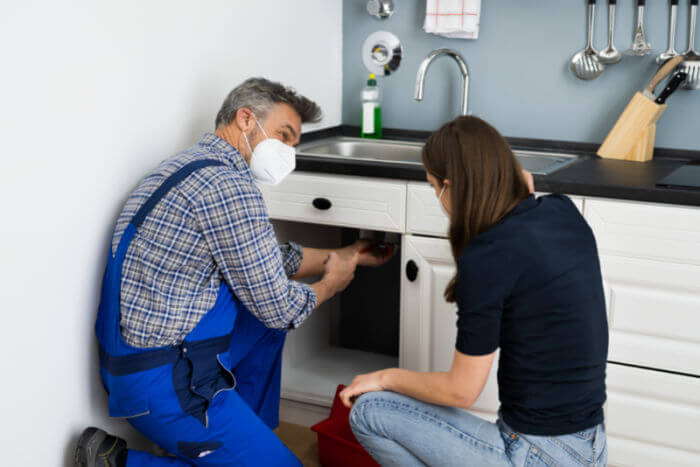
Preventing Common Kitchen Sink Issues
Preventive measures are key in maintaining a smoothly functioning kitchen sink and avoiding frequent plumbing problems. Here’s how you can proactively tackle common issues:
- Regular Cleaning: Keep your sink and disposal clean. Regular use of natural cleaners like baking soda and vinegar can prevent clog formation and odor buildup.
- Mindful Usage: Be cautious of what goes down the drain. Avoid disposing of grease, coffee grounds, and non-food items in the sink. Use sink strainers to catch food particles.
- Routine Checks: Periodically inspect your sink, faucet, and pipes for early signs of wear and tear. Look for leaks, drips, or corrosion.
- Garbage Disposal Care: Run cold water through your disposal before and after use. Avoid overloading and dispose of hard or fibrous materials separately.
- Insulate Pipes: To prevent freezing in colder months, insulate your pipes. This is especially important for pipes in unheated areas or against external walls.
- Professional Maintenance: Schedule annual inspections with a licensed plumber. They can identify and address potential issues before they become major problems.
By following these simple practices, you can significantly reduce the risk of common kitchen sink plumbing issues and ensure a long-lasting and efficient system.
If you’re facing plumbing challenges that require professional expertise, Modernize is here to assist. Our platform connects you with skilled, reliable plumbers who can efficiently address and resolve a wide range of plumbing issues. Whether it’s a complex installation, a persistent leak, or any other plumbing concern, Modernize ensures you have access to the best professionals in the field, guaranteeing quality service for your home.
Compare top-rated plumbing pros in your area.
Read real homeowner reviews, explore qualifications, and view promotions. Modernize makes it easy to browse professionals and find one that will be perfect for your project.

